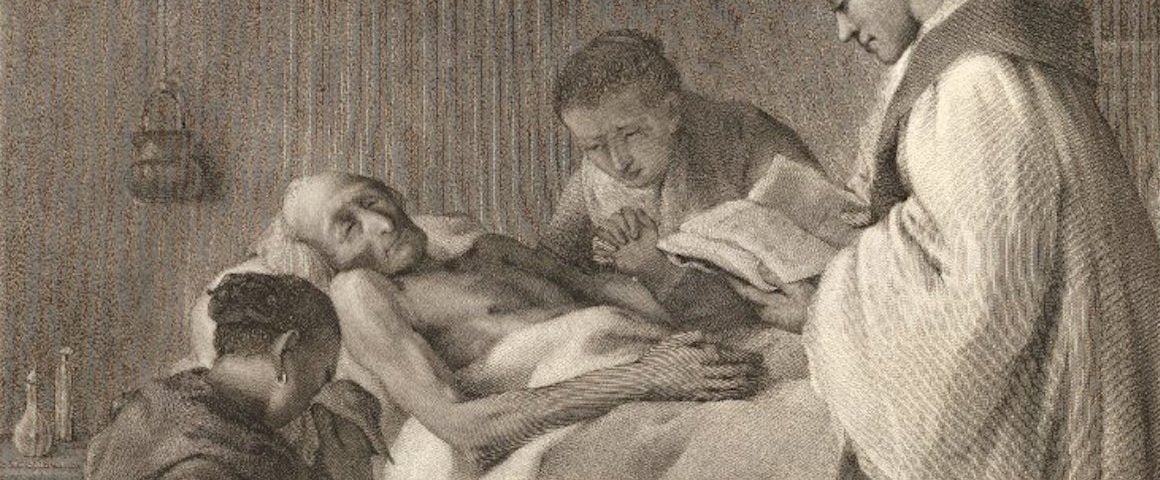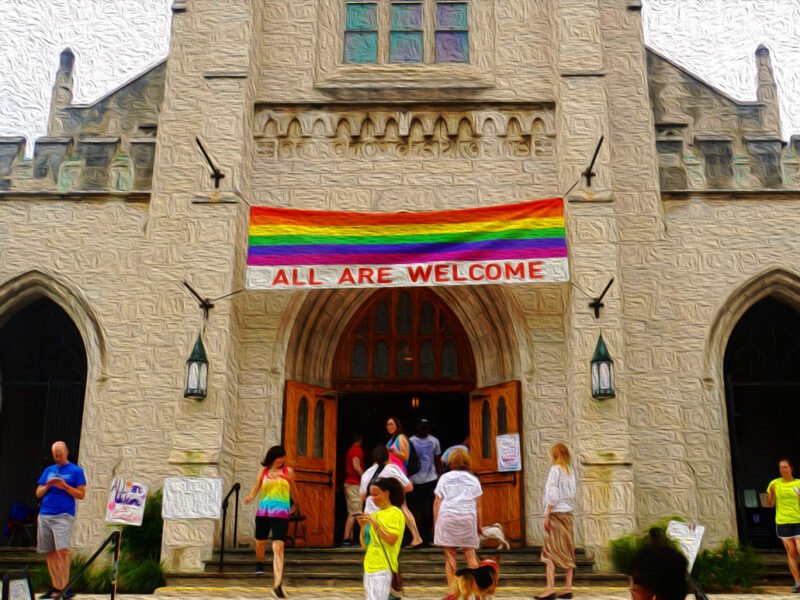“Into your hands, O merciful Savior, we commend your servant. Acknowledge, we humbly beseech you, a sheep of your own fold, a lamb of your own flock, a sinner of your own redeeming. Receive him into the arms of your mercy, into the blessed rest of everlasting peace, and into the glorious company of the saints in light.”[1]
My grandfather was a steadfast Lutheran. As a first generation American of Swedish descent, so too were his parents before him and his children after him. Lutheranism was an integral part of who he was, and it was an integral aspect of the faith that he passed onto his children and grandchildren. Even in his final years, my grandfather never missed receiving Holy Communion at the stately downtown church. His faith was an odd mixture of quietism and pietism; he was a churchman whose children went on to be either Lutheran pastors and deaconesses, or to marry lutheran pastors. The faith he fostered was one steeped in the liturgy of the church through constant repetitive exposure.Within recent memory, my grandfather suffered a stroke and passed into eternal rest. As he drew his final breaths assisted by life support in a coma, I was blessed to stand by his bedside. I am young and fortunate to be unfamiliar with the grave, but as I stood at my grandfather’s side, I knew that even those in the room most accustomed to death stood in a foreign environment. The deathbed of a loved one is not, and never should be, familiar. Its reality is a stark reminder of our fallen reality and the truth that we were made for incorruptibility. Death is not natural. Thus, I stood at his side at a loss for words – not conversationally, but palpably. What can we say in such situations? I knew where he was going – my grandfather passed in the hope of the resurrection; but what do pithy epithets mean in the moment of death?
Besides being young, I am a student of theology and a lover of the great liturgical traditions of the Church. I am a postulant for ordination in a liturgical tradition (Anglican Church in North America), and a thankful inheritor of that rich Lutheran traditionalism passed on by my grandfather. Yet, much of my love for liturgy and tradition is theoretical. I have grand ideas regarding the use and import of liturgy, but mostly those ideas are expressed within the confines of my home with an infant and a two year old who remind me often of the tenuous challenges of catechizing a nursing child.
Standing by my grandfather’s bedside my understanding of liturgical catechesis became real rather than theoretical. The presence of Christ entered the room through the presence of my grandfather’s pastor, an unassuming Lutheran minister. Honestly, this man barely knew our family; he had only ministered in his congregation for a month or so, but this did not matter. He knew his role, and he knew that what he brought to that situation was real and objective. It mattered. He was not lost for words because he turned almost instantly to the prayer book in his hand. The pastor set the table in front of us and we turned as one to the Sacrament of Holy Communion. Everyone in that room had grown up with the Lutheran liturgies, and as that old prayer book was read we all entered in; we knew the words he spoke. It did not matter how long it had been since we had last said these words; they were a part of us. The room and environment was utterly foreign, but the liturgy was not. The constant steady phrases grounded us and gave us an objective reality to lean into. We were no longer at the bedside of a dying man – we were in the heavenly throne room feasting at table with cousins and siblings just as much as with my comatose grandfather. It was a thin place where heaven and earth met.
The hope of the resurrection becomes real at the moment of one’s passing. Seeing the frailty of an unresponsive body hooked up to life support imparts an understanding that this is not the end. It is not the telos of life but the gateway to a much more glorious life. But how do we express that? We do not need to, for the tradition of the Church says it for us: “Keep our brother… in the company of all your saints and, at the last, raise him up to share with all your faithful people the endless joy and peace won through the glorious resurrection of Christ our Lord.”[2] The Church spoke for us through her minister and her prayer book as our own words failed us.
As the pastor administered last rites at my grandfather’s passing from darkness into light, I witnessed something that defied any theoretical training on theology and liturgy. The historic liturgies of the church transformed that stark hospital room of death into a place of life and light. The liturgy provided us with structure in a listless moment; it provided us hope in a hopeless case. God is not bound to the liturgy, but through the liturgies of his church he became known to us in a way that was as real as the sacraments are tangible.
For those of us who are parents, whether spiritual or material, this is a lesson we ought to take to heart. I discovered in that hospital room that the fruit of liturgical catechesis is not often realized in the day-to-day moments, nor is it normally recognized in the weekly Eucharistic celebrations. Yet, those daily and weekly liturgies form us in ways that come to bear experientially. The liturgy gives us a lifeline that buoys us up when all else seems to have failed. The ancient prayers of the church embed themselves within us, and speak when we have no words. Do not give up the formational power of the liturgy – lean into it. The gravity of that liturgical catechesis is made manifest at the deathbed.







'Liturgy at the Deathbed' has no comments
Be the first to comment this post!